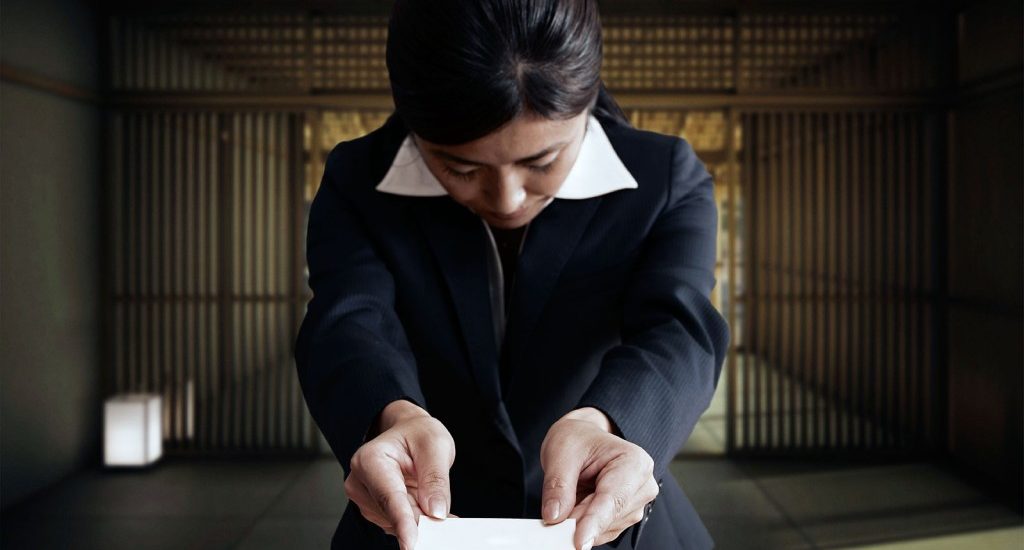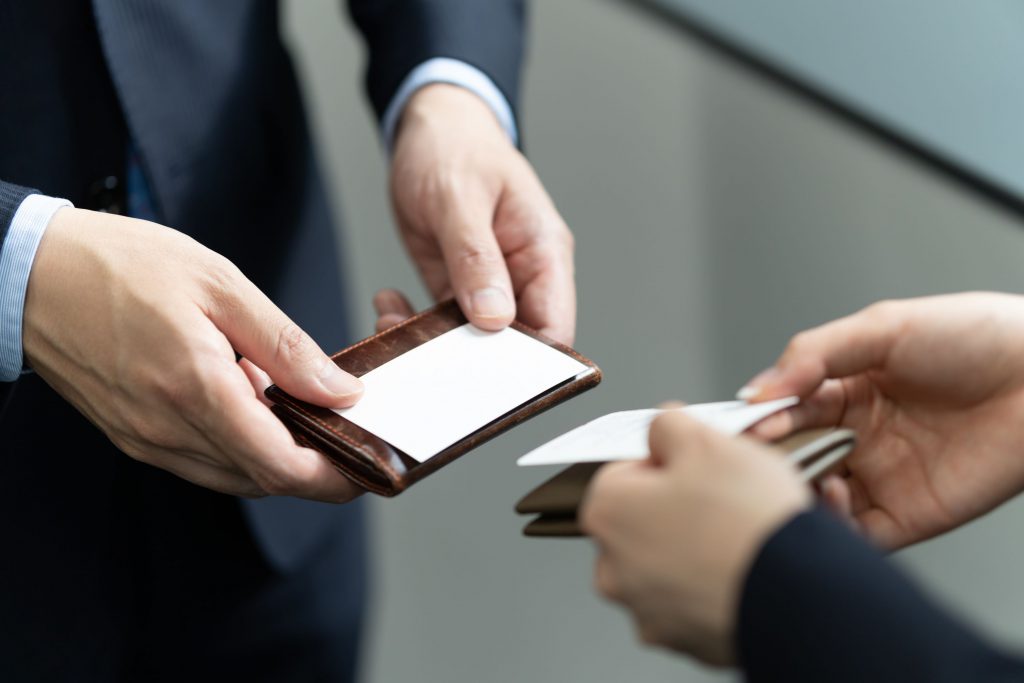Japanese business etiquette is complex with many rules and business card exchange forms the core of it. Mastering this technique is the ley to establishing good business relationships.

One of the first things anyone planning to work in Japan or even a short-term business visitor there must learn is the proper way to exchange business cards. Business cards are exchanged all over the world but in Japan Business card exchange or Meishi Koukan as it is called is an almost sacrosanct ritual. It has its own rules and etiquettes that must be followed diligently. Not following them gives offense to the other person and may even affect your business chances.
The importance of Business cards in Japan
In spite of all its modernization, Japan still tends to be a country geared towards mutual respect and following traditions and etiquette. This is also reflected in the way the Japanese do business. Japanese business etiquette is complex and has many rules, and business card exchange forms the core of it. To the rest of the world, a business card just provides information but in Japan, business cards are considered to represent the face of the person and are an indication of the person’s business and social standing. They are in a way an extension of that person.
No business meeting can begin before cards are exchanged. Business card exchange is considered the first, vital step towards establishing business relations. To a large extent, networking is still done in Japan using Business cards. Cards once received are rarely thrown away. Even if the business deal does not go through the first time, the businessman will keep the card for future reference.
Let’s look into the etiquettes of business card exchange in Japan

Prepare in advance
Before you go for your meeting, make sure you know how many people are going to attend and carry enough cards. Make sure the cards are not bent or dirty. Your business card is supposed to represent you and you will cut a poor figure if you give a grubby or old looking card. Don’t carry your cards in your wallet or pocket. That’s not considered good manners. It is better to invest in a good business cardholder.
Once in the meeting room, make sure your business card holder is kept outside your bag and the cards can be accessed easily.
Order of exchange
Normally the visiting party gives their cards first. Also, business cards are always exchanged in the order of hierarchy. The higher-ranking members in the group will start the card exchange first followed by others. If you are not the senior-most person in your group, always wait for the senior-most person to exchange his card first. Usually, people in the group arrange themselves by order of hierarchy so that business card exchange can be done in a sequence. The other party will do the same. Similarly, one should always present one’s card to the most senior person first.
Presenting your card
Business card exchange is never over the meeting table. Move away from the table and if you are the visitor, walk to the other side and present your card to the person. Hold out your business card with both hands, making sure that the card faces the other person. They should be able to read what is written on the card. Bow slightly while presenting the card and introduce yourself by stating your name and the name of your organization and department.
Present your card using your right hand and simultaneously receive the other person’s card with your left. Once you have the other person’s card, be sure to say thank you. Hold the card with both hands and take a moment to read the contents on the card. It will be a nice touch to say the name of the person aloud followed by Yoroshiku Onegai Shimasu.
Putting your cards on the table
Business cards are never put away immediately. The acceptable norm is to display them in front of you on the table until the meeting ends. In case you have received several cards, line the cards on the table based on the seating order. This makes it easy to refer to the participants by their names by looking at their cards. Never write on the cards, play with them or pick them up unnecessarily once you have placed them on the table. This will be considered as a disrespect to the person who has given you this card. Once the meeting ends, pick up the cards carefully and put them inside the cardholder. Never put the card in your shirt or pant pocket.
To a person not used to Japanese work culture, the rules of Japanese business card exchange may seem too rigid and complex. But following the correct protocol will indicate that you respect the other person and value their business and relationship. Mastering this technique will go a long way in fostering meaningful business relationships.
Related Articles
Warning: Undefined array key "sfsi_threadsIcon_order" in /home/veremosglobal/tokyoroomfinder.com/public_html/blog/wp-content/plugins/ultimate-social-media-icons/libs/controllers/sfsi_frontpopUp.php on line 165
Warning: Undefined array key "sfsi_blueskyIcon_order" in /home/veremosglobal/tokyoroomfinder.com/public_html/blog/wp-content/plugins/ultimate-social-media-icons/libs/controllers/sfsi_frontpopUp.php on line 170
Warning: Undefined array key "sfsi_bluesky_display" in /home/veremosglobal/tokyoroomfinder.com/public_html/blog/wp-content/plugins/ultimate-social-media-icons/libs/controllers/sfsi_frontpopUp.php on line 266



